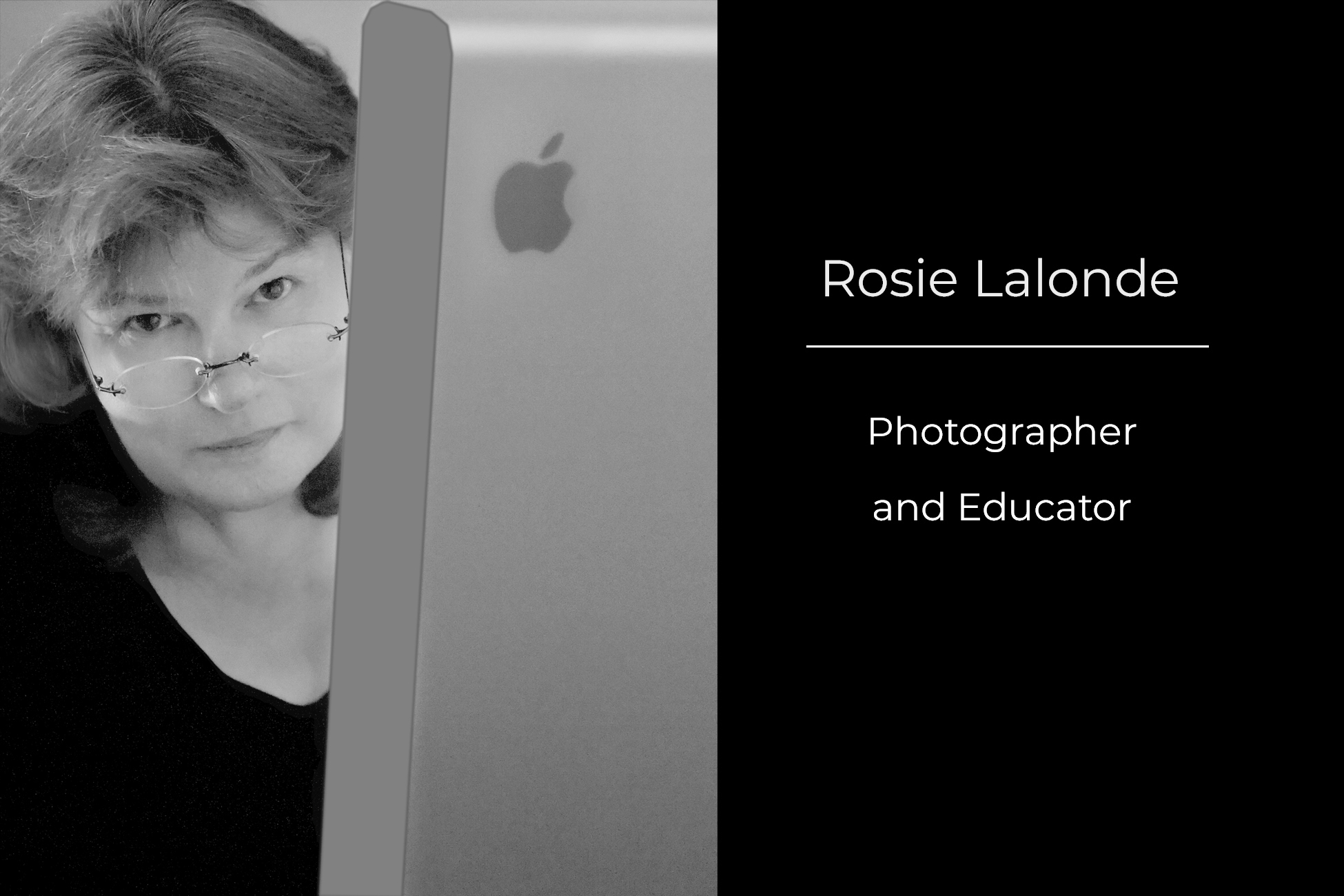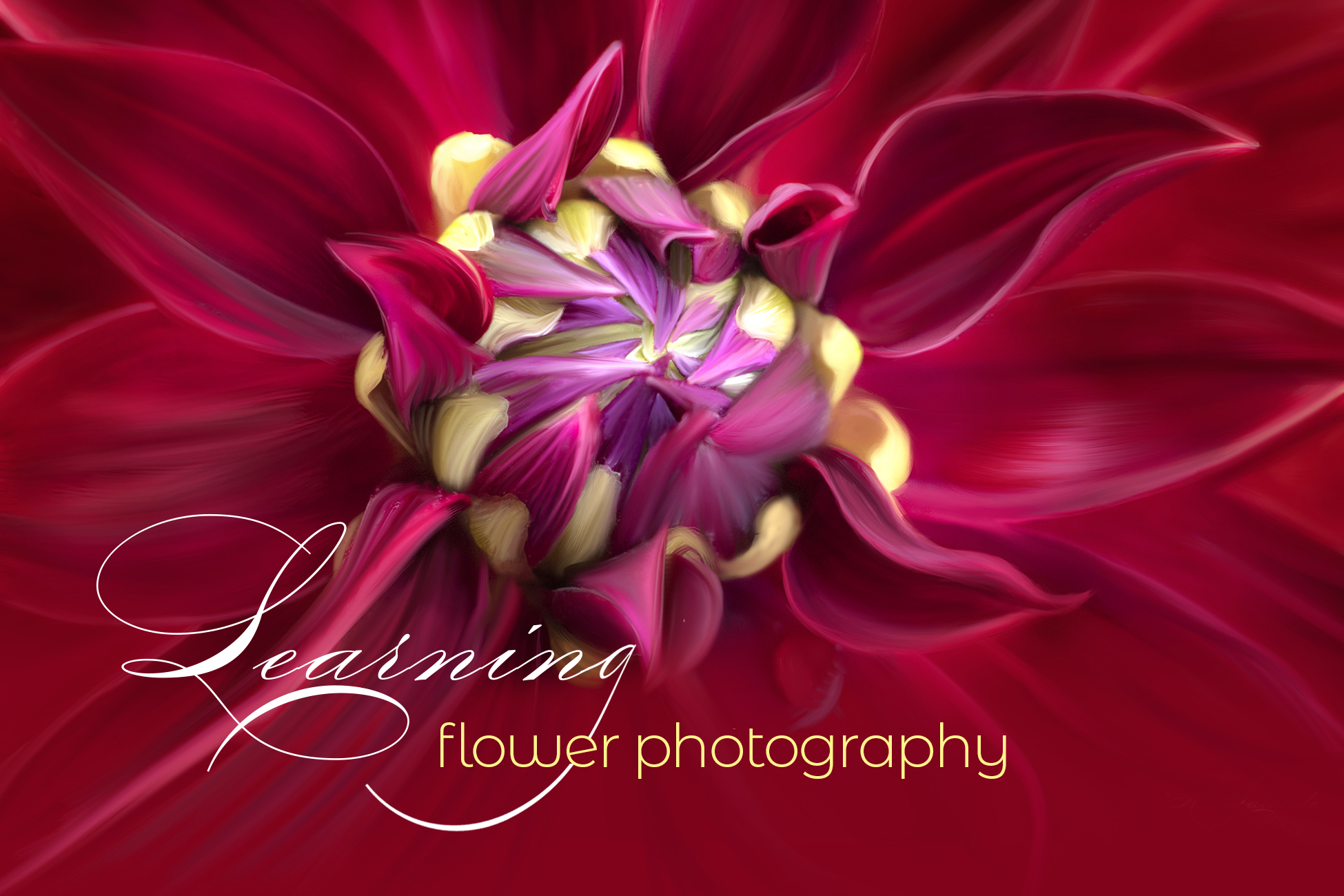Flower photography is unlike any other type of photography. Each individual flower is a subject and frankly, some subjects are better than others so you have to choose wisely. But choosing the right flower is only the beginning. Spending time getting to know your flower subject is paramount.
So, wether you are just learning or you have been doing flower photography for many years, you will learn something new by review each Lesson in this Complimentary Series.
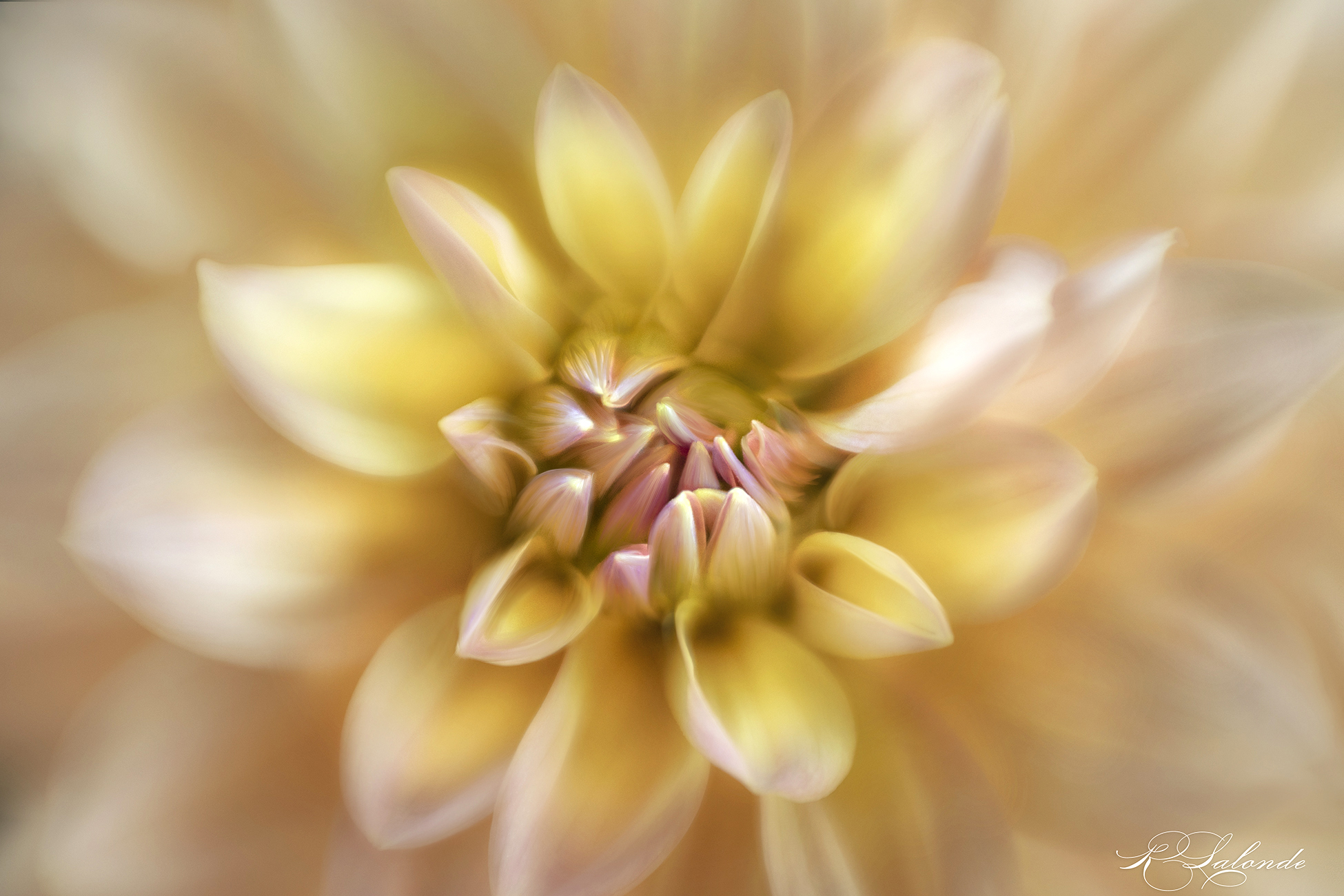
Dahlia Photographed with a Lensbaby Composer Pro
Using the Double-Glass element with a macro ring on the lens and an aperture of f/2.8 I was able to move in close to capture this blooming Dahlia.
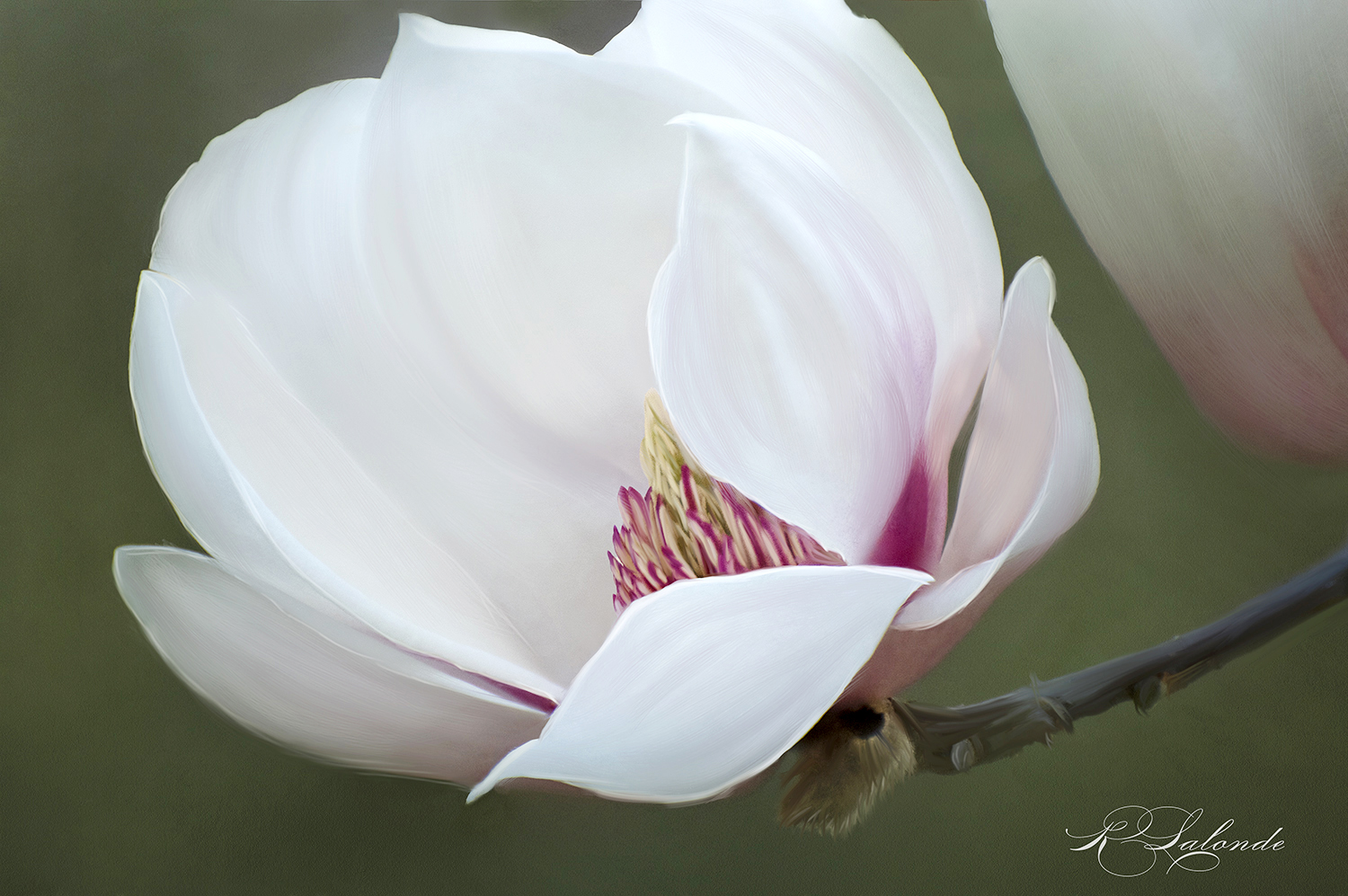
Northern Magnolia Bloom Photographed with 70-300
Using my Nikon D500 crop sensor camera and a Nikkor 70-300mm lens set to 300mm I set my aperture to f/5.6 to capture this lovely Magnolia blossom.
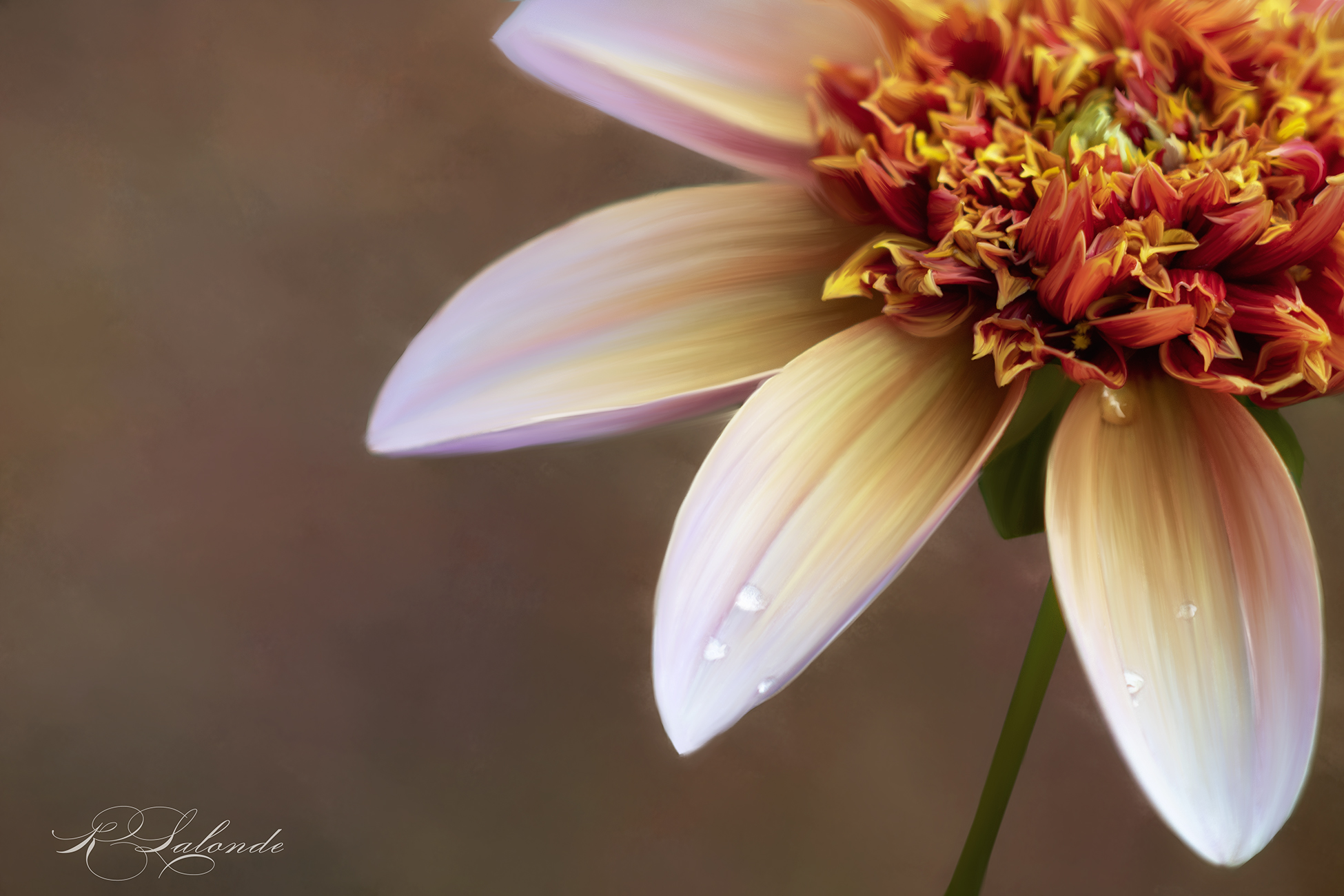
Dahlia Photographed with 105mm Lens on a Full-Frame Camera
With my Nikkor 105mm lens attached to my Nikon D750 full-frame camera, I posed this flower on a diagonal in camera to hide several dead petals. I'm also hiding a very cluttered background with a background texture I created from the flower.
Hi, I’m Rosie Lalonde
After retiring from a long career of photographing weddings, families and children, I went back to my first love, nature. Not long afterward, I found "flowers" and I couldn't believe how challenging it was to obtain artistic flower images.
When I learned to photograph my flower subjects the way I photographed children and families, my entire flower portfolio changed. I now refer to flower photography as flower portraiture.
